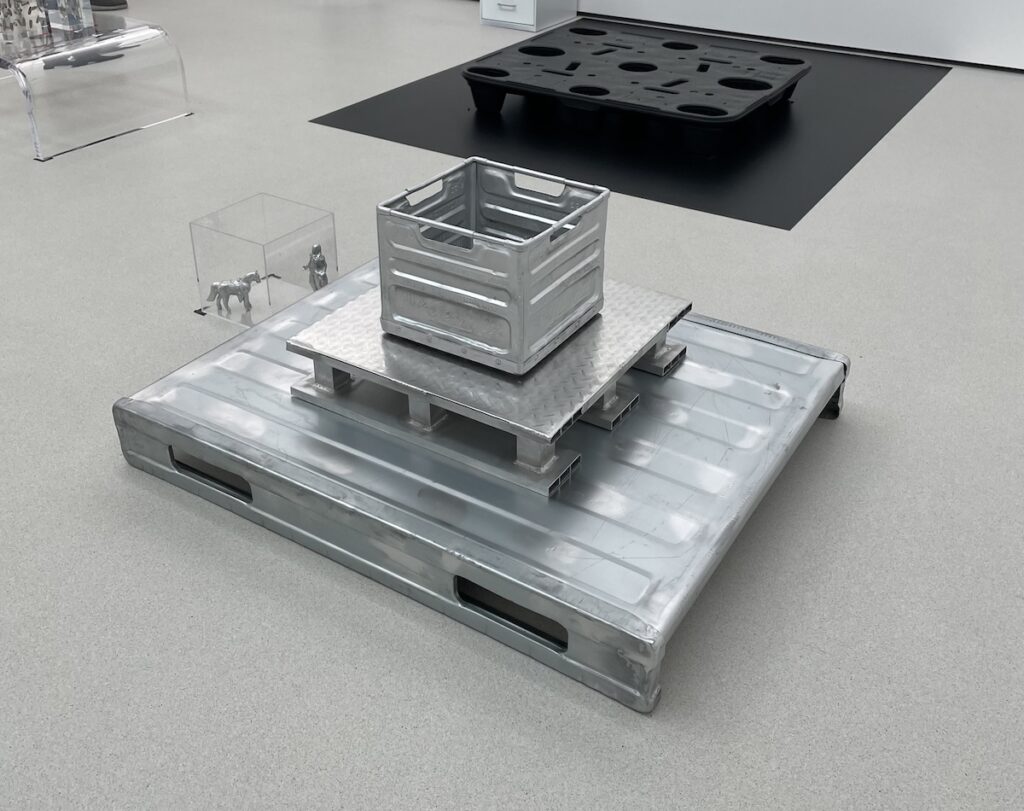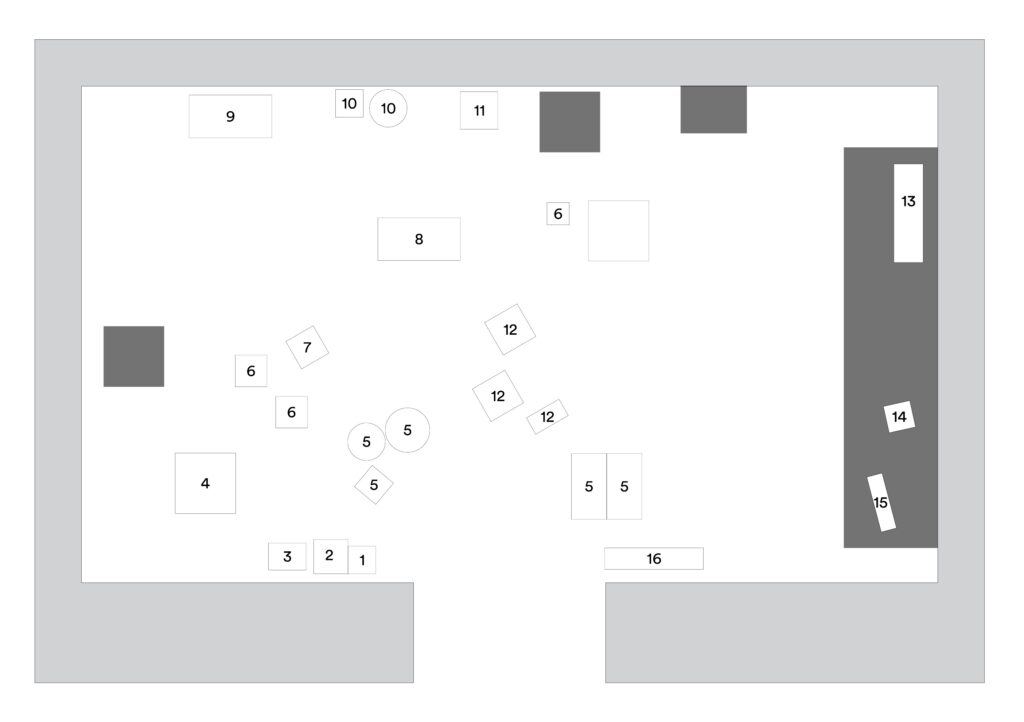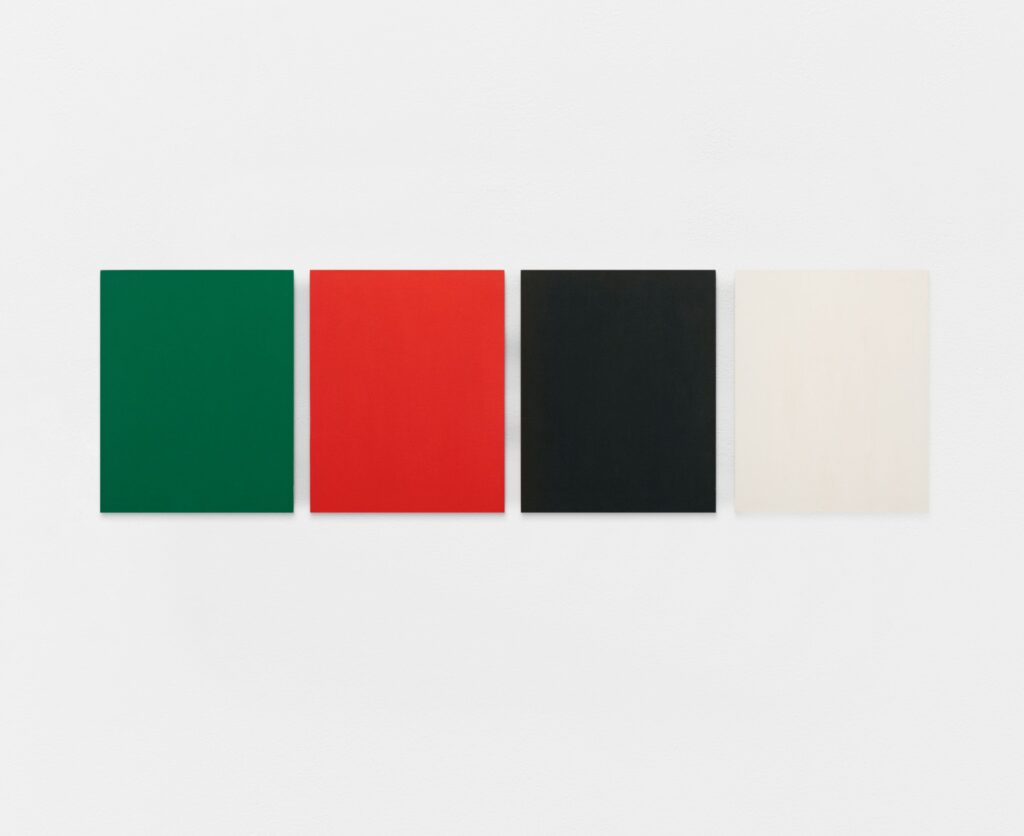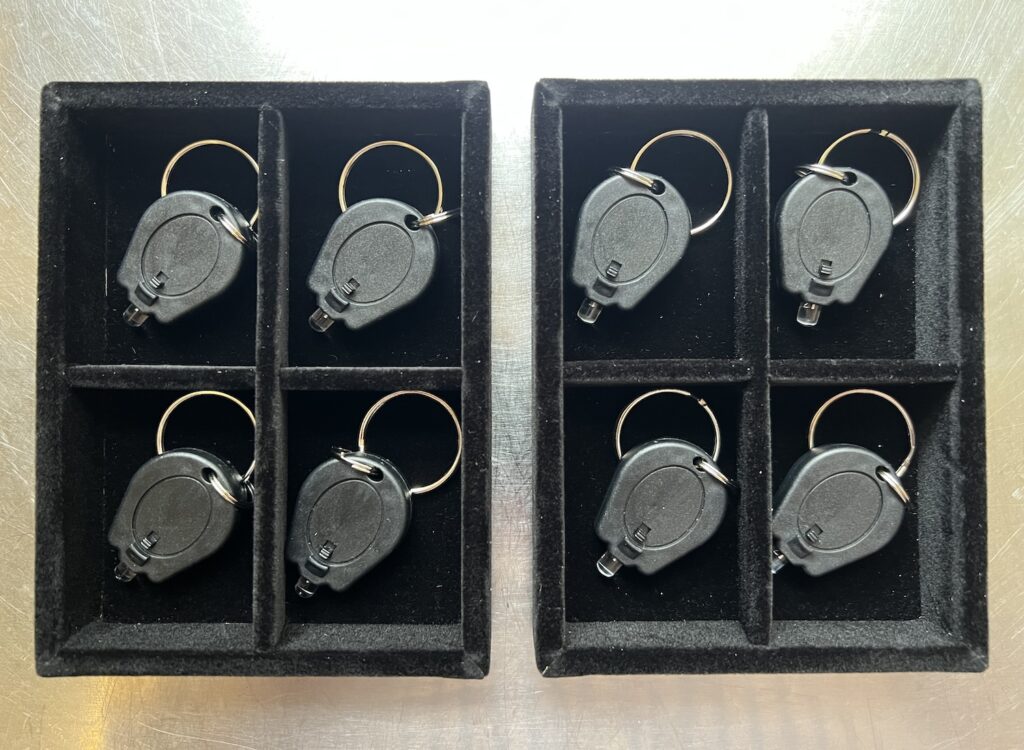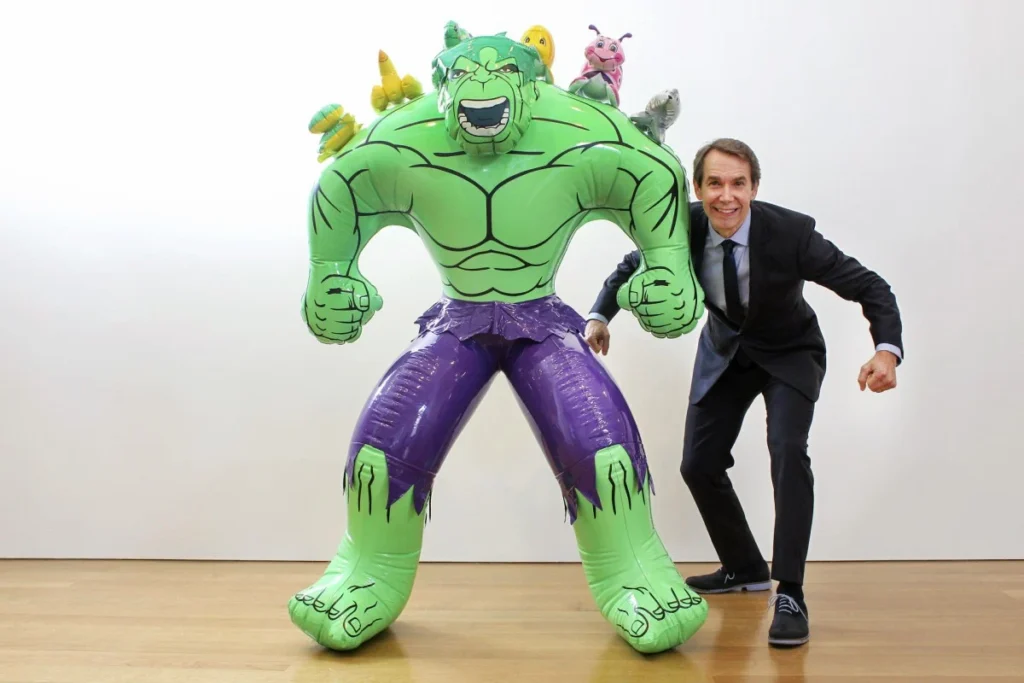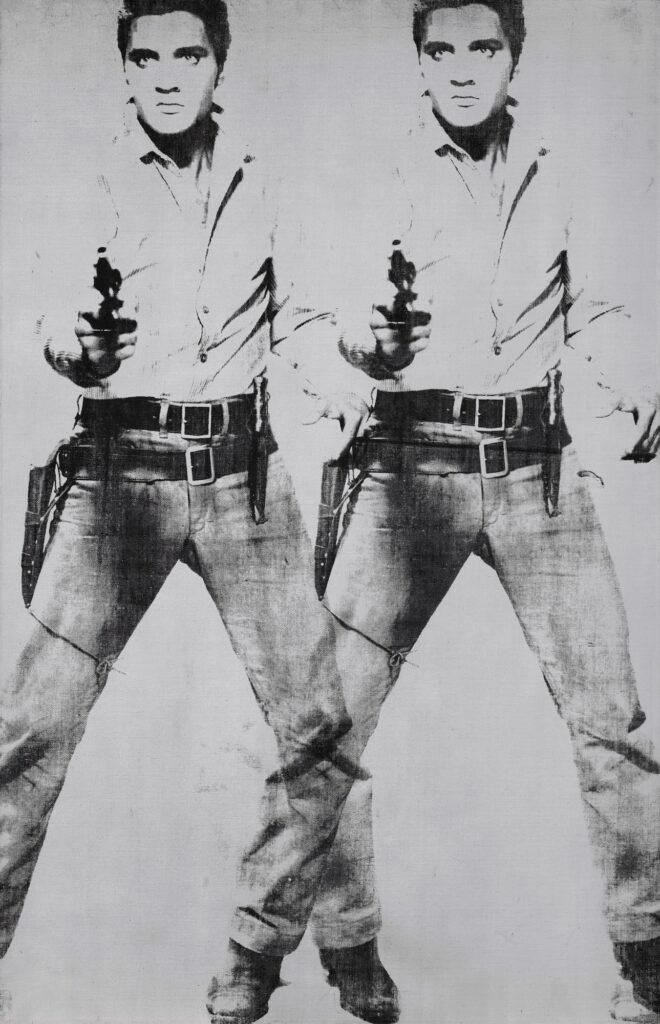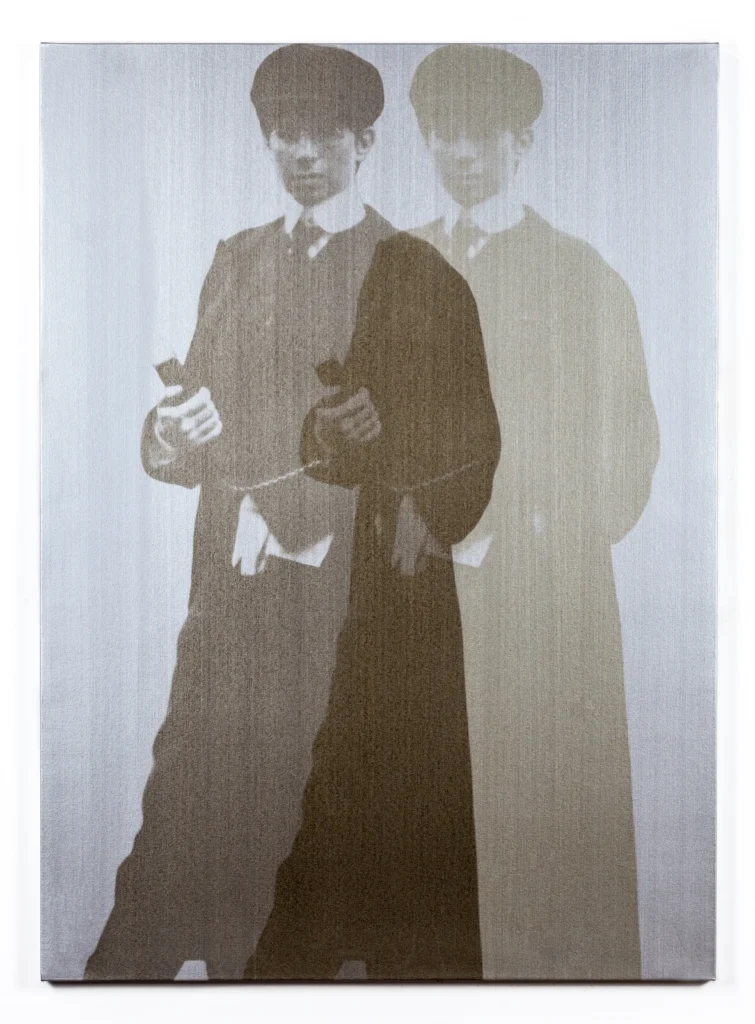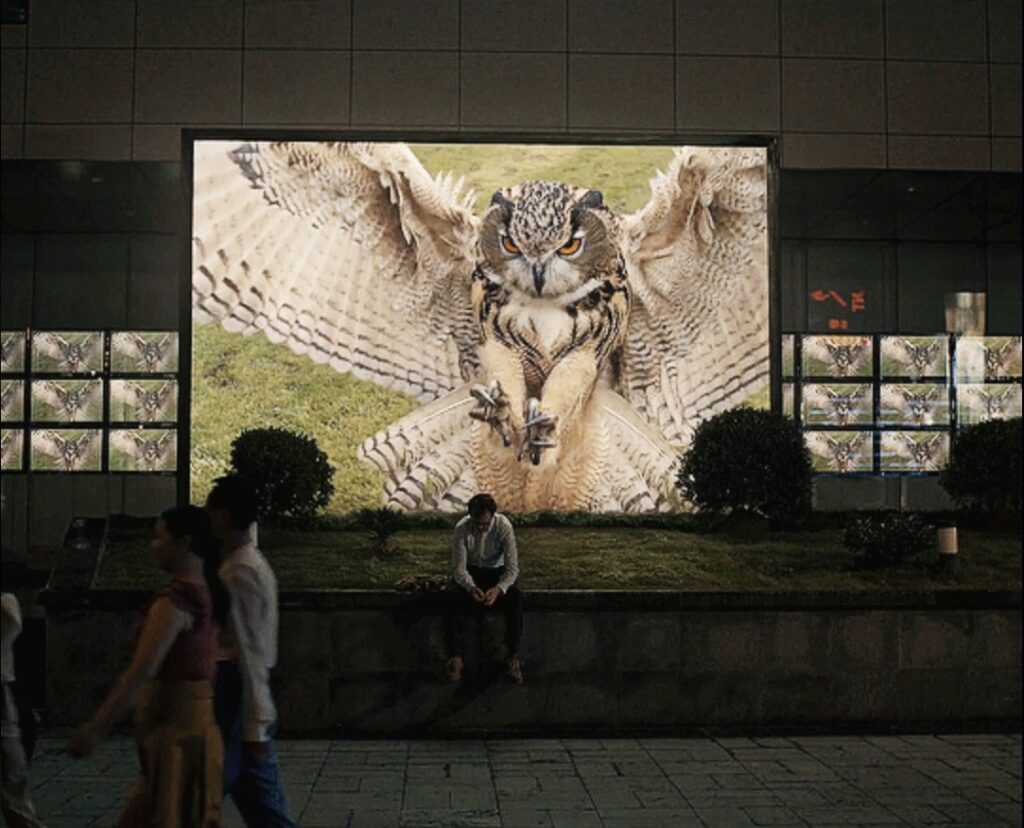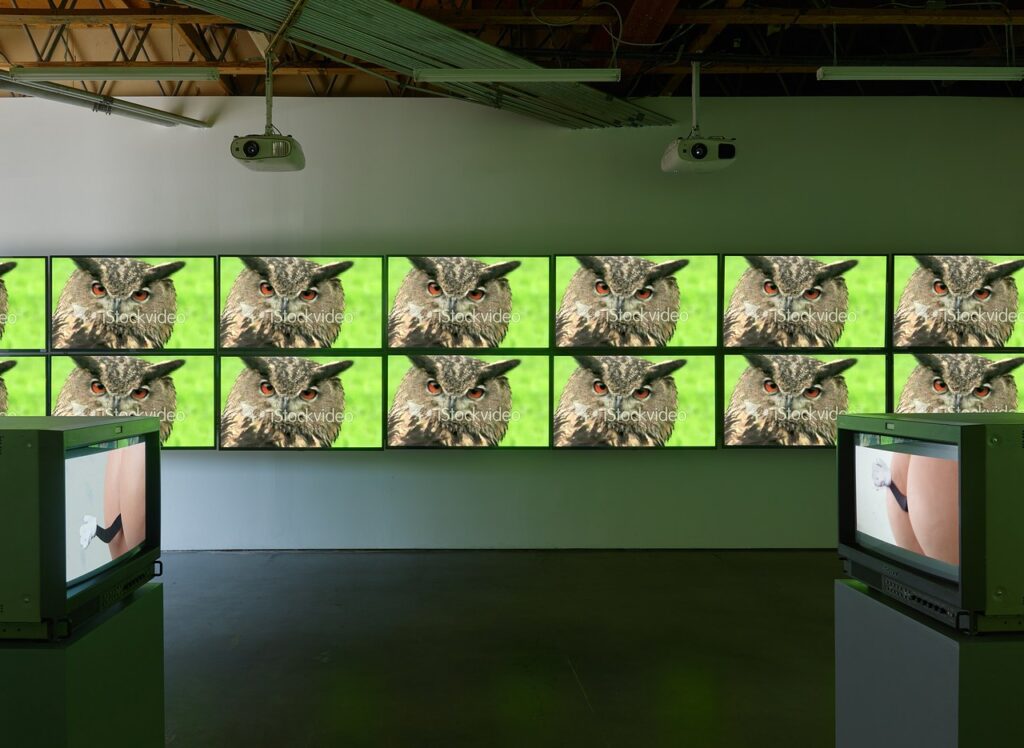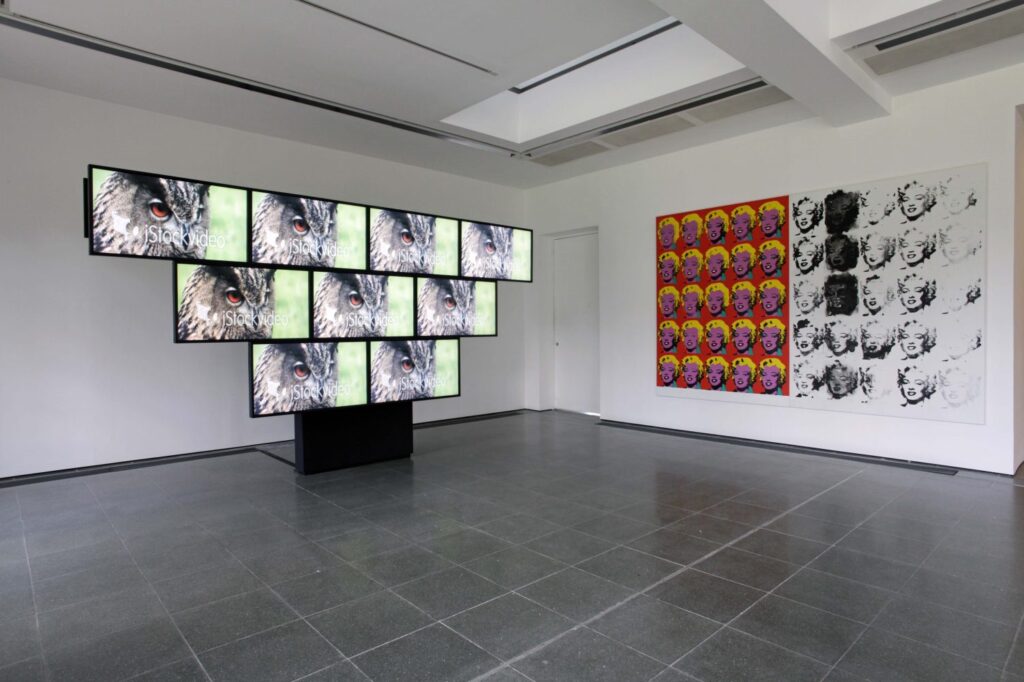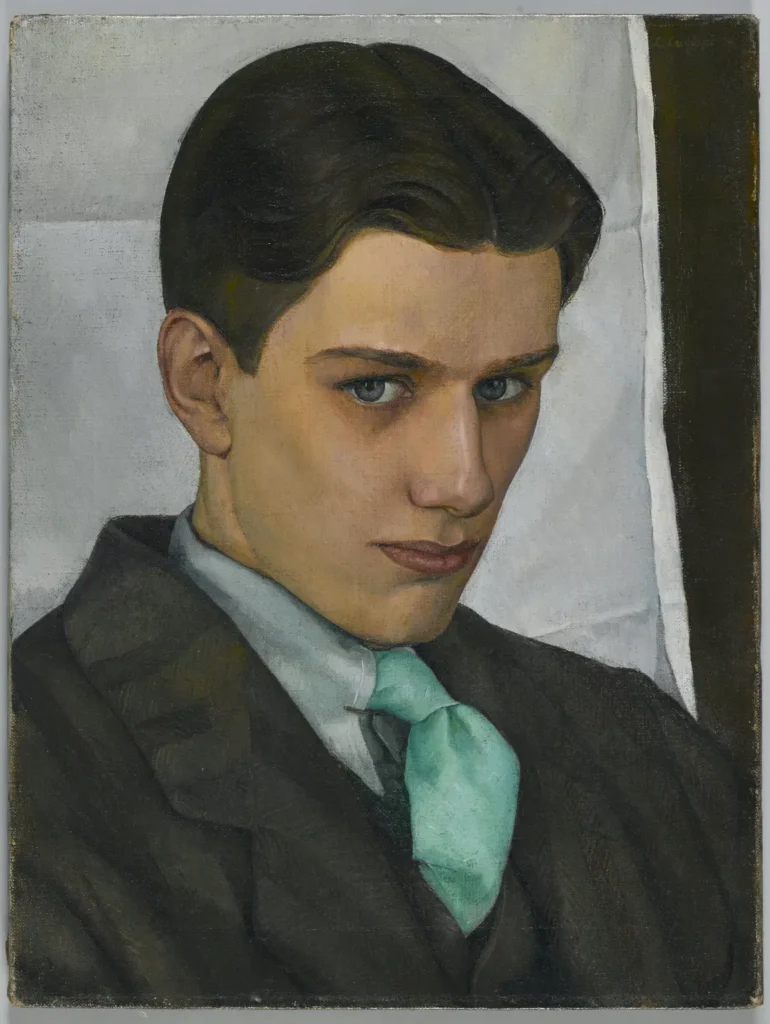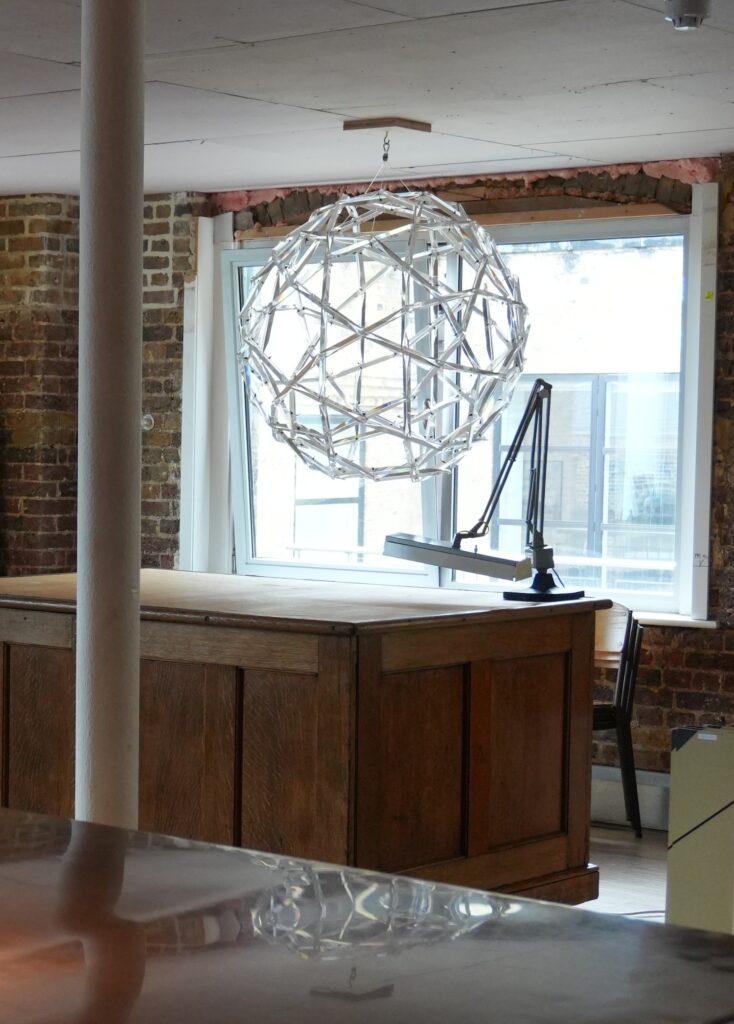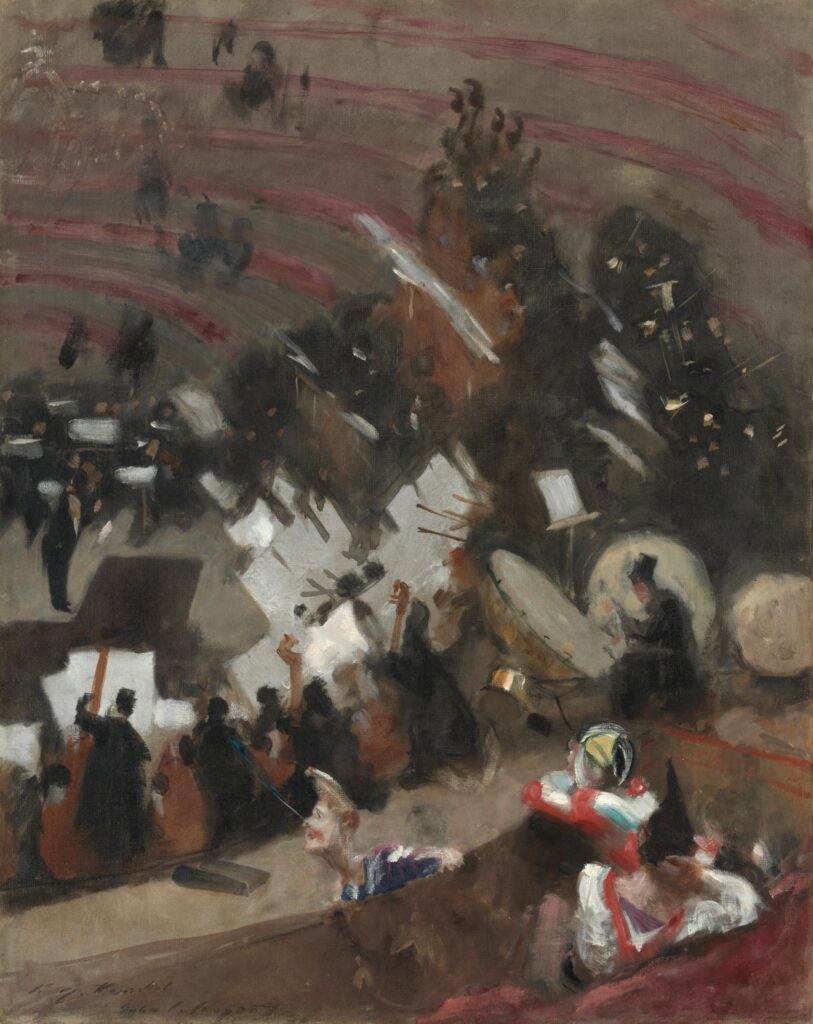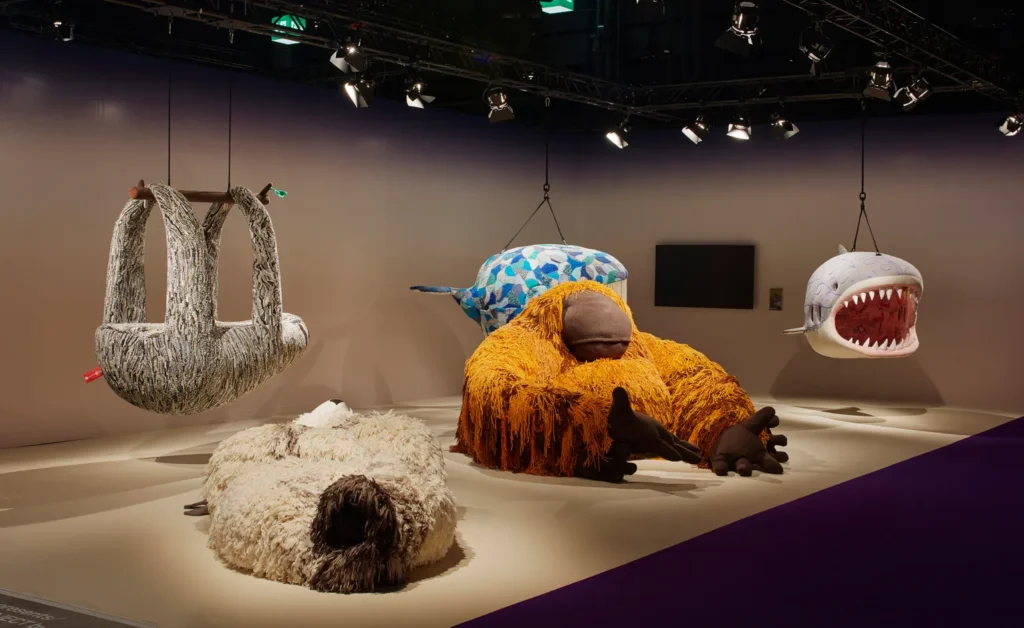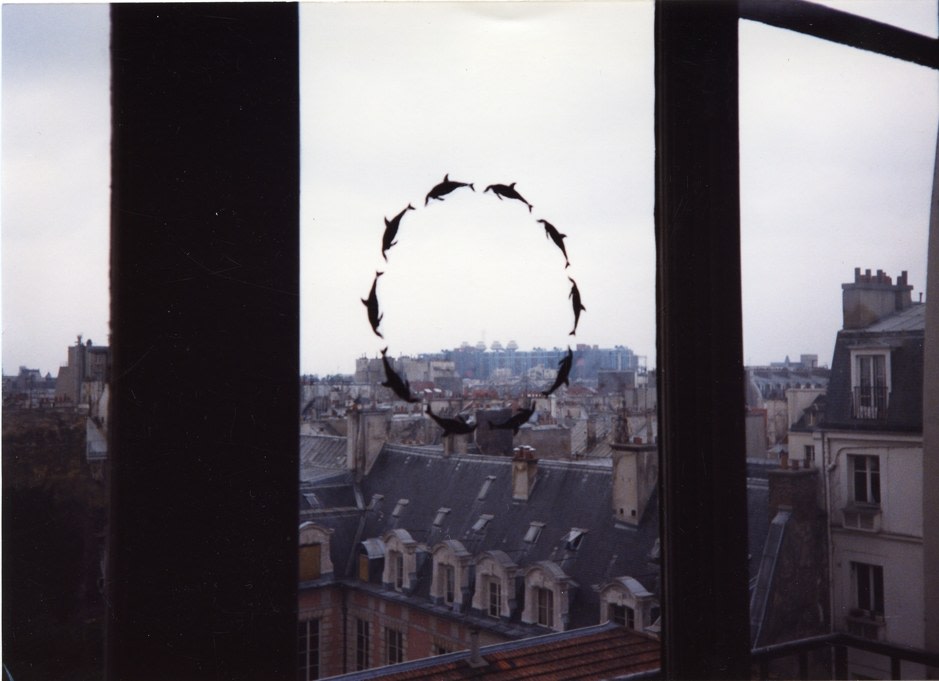
Last weekend the curators of the National Portrait Gallery and Archives of American Art’s exhibition, Felix Gonzalez-Torres: Always To Return, held a public conversation about Felix Gonzalez-Torres tattoos. It was great. But no one, including the curators and art historians who have Felix tattoos, and not me, the rando blogger who’s written about them twice, quite knew the origin of the tattoo Felix made as an open edition in 1992.
In my question to the panel, I said I thought it had been created for a show of artist tattoos, but no one else had heard that, and then I saw that info is not on the Foundation’s website, and I was like, Oh no, did I just Felixsplain something to the professionals and get it wrong?
No, I did not. But I did forget that I’d written about the show sixteen years ago.
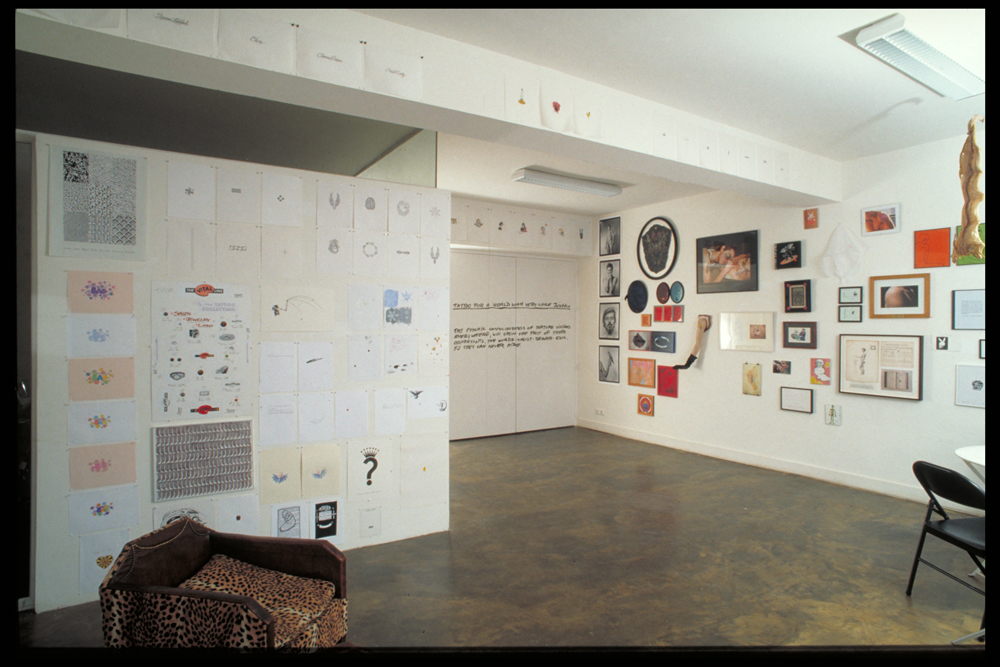
“Tattoo Collection” began as a project in 1991, conceived by gallerists Florence Bonnefous and Édouard Merino and Lawrence Weiner, for Air de Paris in Nice. The first 30 artists to create tattoo designs were also asked to invite someone else. Its first incarnation, of Weiner’s design on Bonnefous’ back, took place on a Monaco rooftop. Over two years the project expanded to six other galleries and almost 200 artists. 33 years ago today, 3 June 1992, it opened at Jennifer Flay’s Paris gallery as a summer group show.
In the years since I posted about it, Air de Paris has filled out the “Tattoo Collection” archive with a press release, a 2014 interview, a couple of installation photos, and the names of 189 participating artists, and the consignment forms for most of them—but only some of the tattoos themselves.
“Untitled”, the 1990 rub-on transfer edition of a stylized ring of ten dolphins that was included in Felix’s January 1990 show at Andrea Rosen, was included here, too. The consignment form from 14 Aug 1992 lists two works, both “Untitled” (or “sans titre,” so the survey was filled out by AdP, not Andrea Rosen), with dates of 1990 and 1992. The former is a rub-on transfer (ed. 20), and the latter is a photostat for the open edition tattoo.
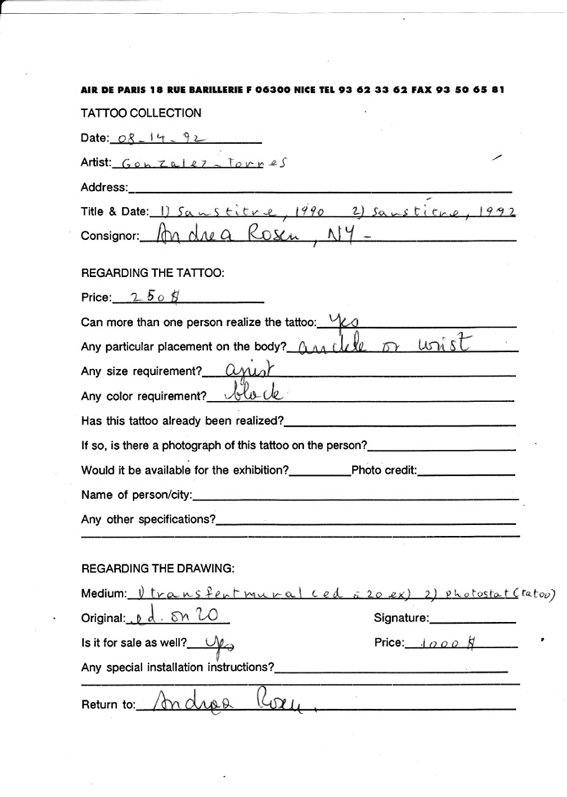
AdP’s basic instructions survey on the consignment form say the tattoo can be bought by anyone, should be black, and should be placed on the “ankle or wrist.” Unsurprisingly, these were not static; the parameters in the certificate Meg Onli got when she purchased her edition from Rosen in 2011 are different and more expansive.
What does seem certain, though, is the connection between the tattoo and the rub-on transfer edition from two years earlier. Though the source of the dolphin motif is still unknown, the source of the tattoo image is the 1990 edition.
There is also much to be explored in the larger Tattoo Collection project. Bonnefous got the inspiration from the instructions for Weiner’s works, that “the work need not be built.” Between this conceptual core and the impermanence of the body, it’s seems realistic to say that the show—and the work—continues to this day, and it’s only our knowledge of it that is limited. Or our memory.

